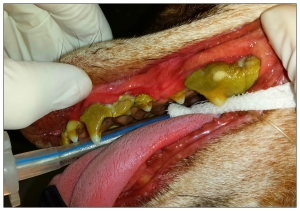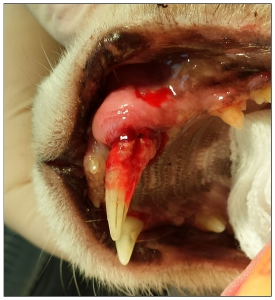An estimated 85% of dogs and 75% of cats over 3 years of age display some form of periodontal disease.
What is periodontal disease?
Periodontal disease is caused by a bacterial infection that spreads, unseen, beneath the gumline. As the disease progresses, it destroys the bone around the tooth roots leading to mobile, painful teeth.
At Kindness Pet Hospital, we take your companion’s oral health seriously. Just as poor oral health in humans correlates with systemic illness such as cardiovascular disease and kidney disease, the same is true for your pet.
Dr. Connor has a keen interest in Veterinary dentistry. She will examine your companion’s mouth and make recommendations for home care and a thorough dental cleaning under general anesthesia, as indicated.
But why general anesthesia?
What is the difference between a dental cleaning, utilizing general anesthesia at my Veterinarian’s office and a “non-anesthetic” dental?


